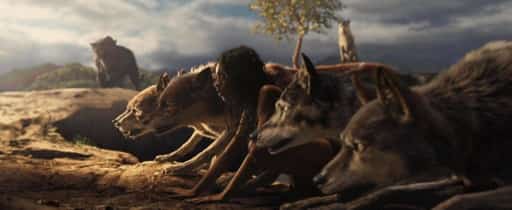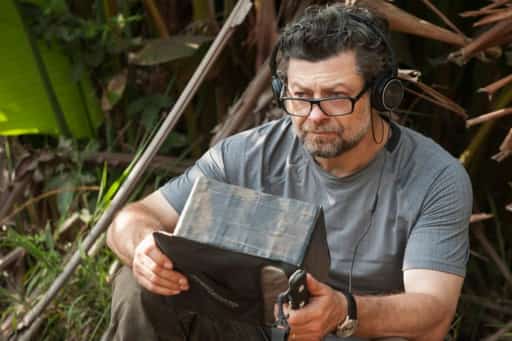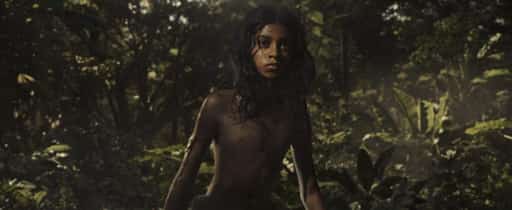Mowgli: Legend of the Jungle is a much darker and sinister adaptation of Rudyard Kipling’s TheJungle Book, with stunning visual feats from director Andy Serkis and an interesting take on the story which has a “post-Dark Knight” vibe to it. Viewing Mowgli was a significantly different experience than the Disney’s “live-action” remake of its 1967 “The Jungle Book” two years ago directed by Jon Favreau, a film whose blockbuster success was one of the many reasons whySerkin’s film was delayed.
Mowgli technically went into production before the 2016 Jungle Book, but its effects, which rely heavily on motion-capture performances, took more time to finish. Kipling’s stories have been adapted countless times already to know the basics of the story, Mowgli is an orphaned boy, raised by the wolves and mentored by black panther Bagheera and a bear named Baloo, and threatened by the vicious tiger Shere Khan, and destined to choose between returning to human society or continuing to live among the animals. There’s a reason people keep adapting The Jungle Book — it’s fun to see a little kid run around with big animals, and once you take away the book’s colonialist tendencies, and you’ve still got a kid, some animals, and a lesson about accepting your responsibilities as you grow toward adulthood. The filmmakers clearly tried to bring an uncommon maturity to the fantasy film, however, it was lost among the creepily anthropomorphized animals and a cluttered script, resulting in a film that is hardly the sort of wholesome family entertainment that the 2016 Jungle Book was. We lose everything charming and whimsical about being a child lost in the animal kingdom along with the singing. It’s the aspects of the story that Serkis chooses to explore is what makes this version of the JungleBook more difficult to stomach.

Mowgly: Legend of The Jungle
The film starts on a pretty dark note, as primitive-looking humans run in panic from an attacking tiger attack, while Cate Blanchett’s Kaa offers a hypnotic prologue. Shere Khan pounces and presumably kills a mother and her child until Bagheera shows up to rescue the blood-spattered infant in the next scene. The film starts with a brilliant wide shot of the jungles where most of the story takes place, however, the opening feels clumsy, as we don’t know yet what to expect yet. Humans disappear for most of the movie. Instead, Mowgli and his animal buddies are shown with an endless succession of visually appealing shots, sunset-backed silhouettes, moments of waterside contemplation and countless bursting-through-the-jungle sequences, in which nothing or particular narrative interest is taking place. What we are getting is a confused rehash of a beloved story, in which both people and animals are portrayed as cruel, and where his character development is central to the plot. The movie feels like a coming-of-age tale as the man-cub seeks to establish his identity as not quite human, not quite wolf - “Both or neither”.
When it comes to talking animals, we’re used to watching the mouths move - and sometimes, even the area around the eyes. Although Kipling himself clearly approved of anthropomorphizing the animals, this creepy visual interpretation couldn’t have been what he had in mind, where familiar actors’ faces have been stretched and mapped onto a variety of different species. Andy Serkis is an acknowledged master and a pioneer of motion capture, who created the roles of Gollum in The Lord of the Rings and Caesar in the new Planet of the Apes trilogy. It was expected that he would put his considerable talent to good use.

Andy Serkis | Director of Mowgli: Legend of the Jungle
In Disney’s remake, the animals are remarkably photo-realistic. But Serkis is purposefully trying to achieve something entirely different. The motion capture has been tried to make the animal characters deeper, richer and almost more recognizably human. In Mowgli, however, the animals’ faces are ragged and wild in appearance yet unnervingly expressive. Every facial expression is mapped onto the heads of otherwise photorealistic animals. If one pauses the film on any scene, and you’ll see creatures with overlarge, hyper-detailed heads grafted onto weirdly out-of-focus bodies, forcibly diverting our eyes to their ragged faces. Also, Baloo, everyone’s favorite singing and dancing bear, seems to have a perpetual cold, and has the face of a bare-knuckle boxer. Baloo feels slightly like a caricature, overly rough around the edges which is a completely unnecessary addition to the beloved character. Various additions such as these take away the enjoyment more than they add to it. Motion capture is a great way to achieve certain effects. But it turns out when you use it to graft human expressions onto animals, you end up waddling into uncanny valley territory.

Mowgli
The voice cast is probably the best thing about the movie. Cate Blanchett as Kaa, Andy Serkis as Baloo, Naomie Harris as Nisha the story all top notch. Christian Bale’s nuanced performance as Bagheera the panther and Benedict Cumberbatch’s ferocity as tiger Shere Khan are the standouts though. Rohan Chand playing the titular character of Mowgli has an innocent expression throughout, however, it is difficult to empathize with the protagonist probably because the plot lacks a proper structure.
However, that is the only thing that is good about the movie. The music by Nitin Sawhney goes empathize overboard and we consciously feel like this is the work of an outsider who is trying too hard to remind us that the film has Indian roots. The script felt, with the plot veering wildly off course from the familiar narrative in the middle of the film post-Dark the attempt to dissect colonialism via a British dude, who just shows up two-thirds of the way through the movie made it even worse and was nothing but a useless addition to the script. The dialogues lacked the punch and end up making the characters feel alien.
At the end of the day, the movie felt utterly pointless, as the character designs are far too scary and the themes that have been tried to be explored make it not entertaining for the kids. However, it is far too sublime for adults to enjoy. This would have been fine if the interactions between all the wonderful characters were as memorable as they were in previous tellings. Mowgli feels like a movie that despite the extraordinary talents involved in the production lacks the soul that its predecessors had. That would’ve made it a disappointment to anyone buying a movie ticket, but perhaps at home, it will make for a more welcome distraction.
Read More:



